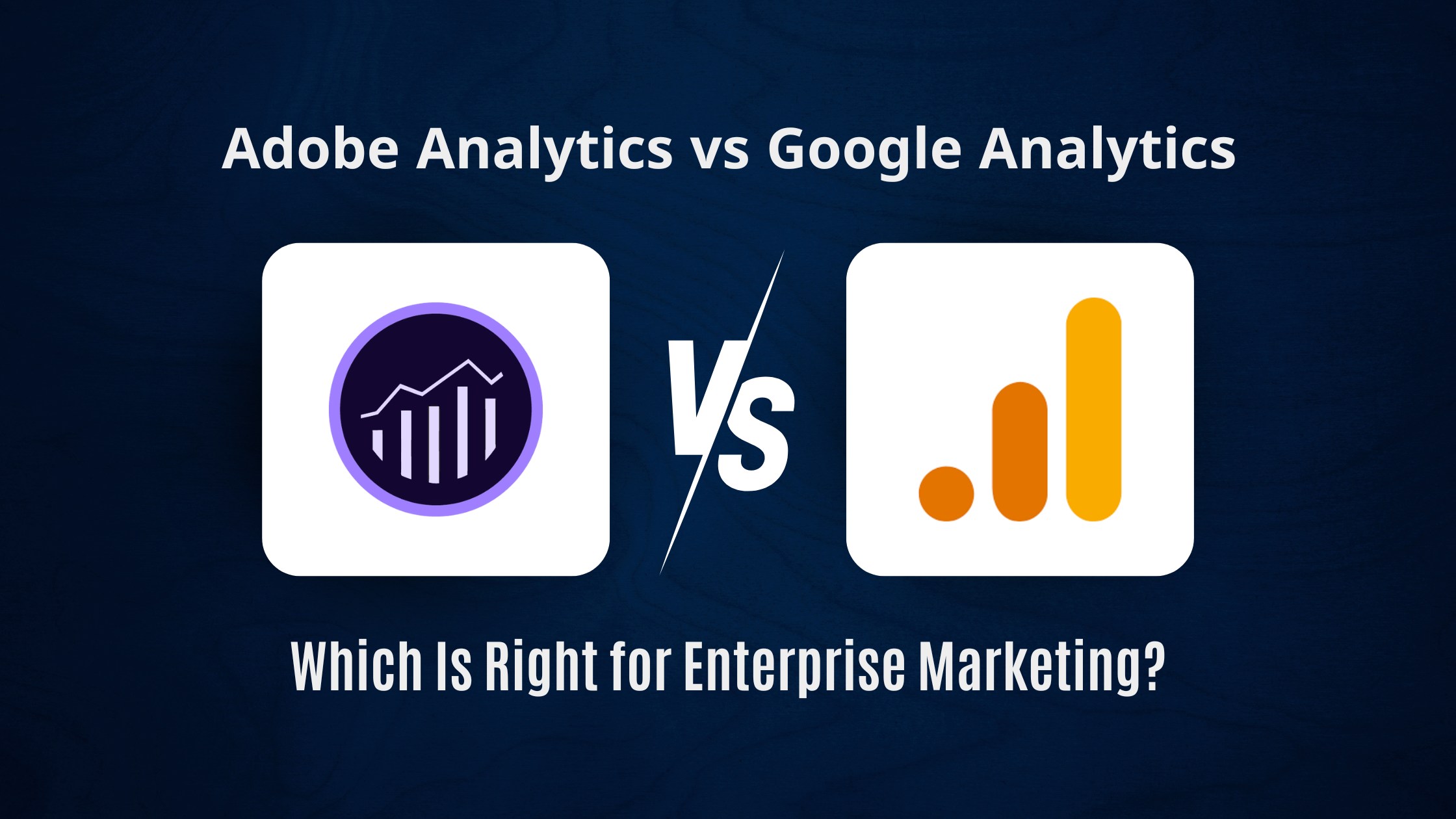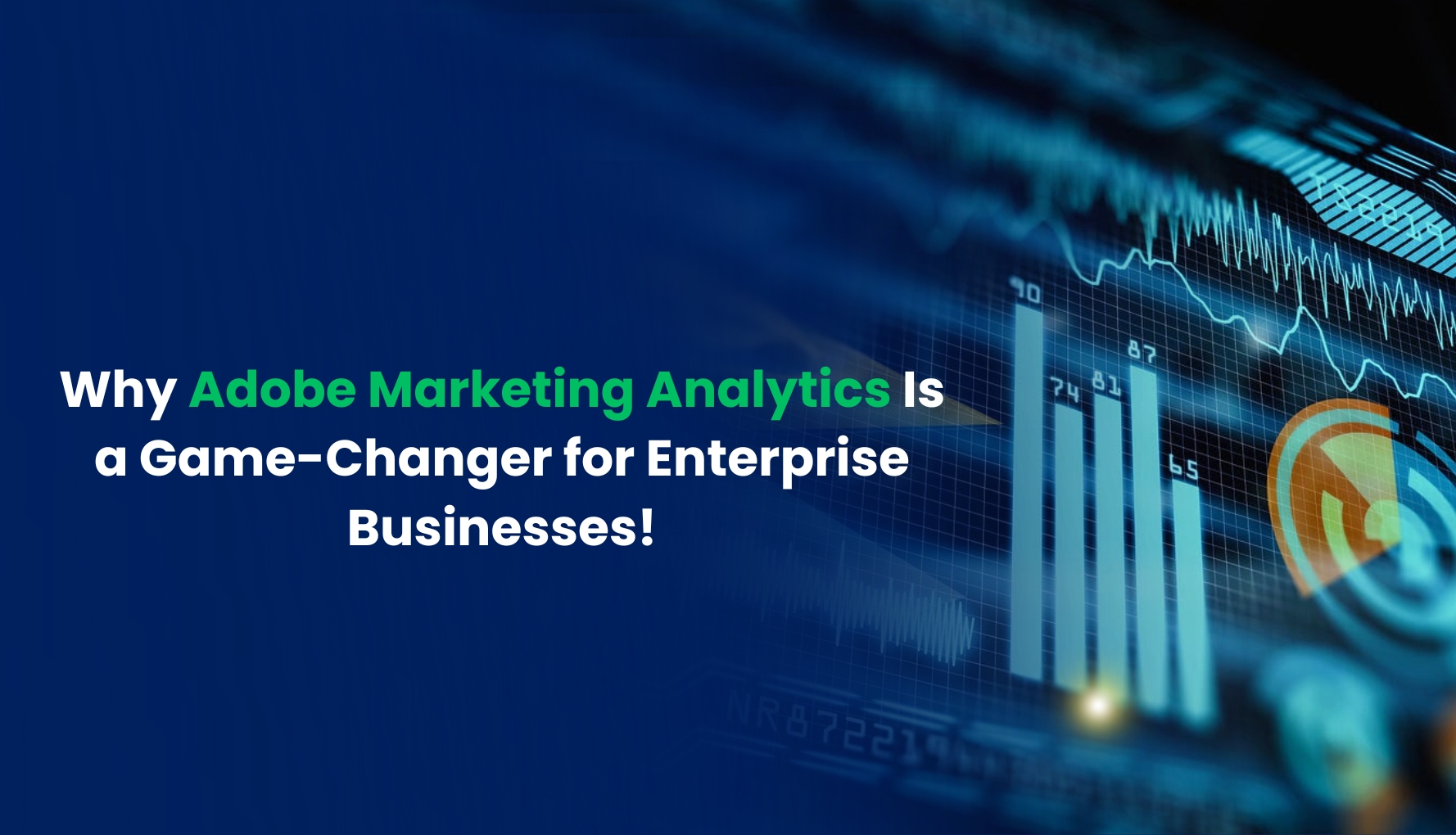Adobe Analytics vs. Google Analytics: Which Is Right for Enterprise Marketing?
Enterprise marketing is a substantial sector that upgrades strategies to promote the products, goods, and services of large organizations. It helps to promote across various regions. What will happen if enterprise marketing is implemented with Google Analytics or Adobe Analytics? And which is the right choice? Adobe Analytics vs Google Analytics is one of the never-ending comparisons of tools for enterprise marketing.
In today’s data-driven marketing world, selecting the right analytics is crucial to upgrading the business, customer engagement, decision-making, and driving ROI. Adobe is best known for providing real-time data, whereas Google is ideal for intense integration. To learn which analytics suit enterprise marketing best, continue reading the content below.
What is Enterprise Marketing?
Enterprise marketing is specially designed for large-scale business organizations to promote their brand, service, and products worldwide. This kind of marketing holds cross-functional integration, automation, scalability, and more. With the help of analytics, enterprise marketing can enhance its strategies to foster organizational growth. Choosing the right analytics platform will shape the large-scale business to multiply their profit. This process includes marketing campaigns, social media, customer engagement, and more.
How Are Analytics Implemented in Enterprise Marketing?
Analytics in enterprise marketing plays a major role in data collection, analysis, integration, segmentation, etc. Analytics promotes customer engagement, satisfaction, sales, and the best business outcomes. It helps to find higher-volume customers, creates marketing campaigns, assesses ROI, and allows social media marketing.
There are two kinds of analytics called Adobe and Google Analytics, which are produced by their respective companies. Have you wondered which of these two analytics platforms is best suited for enterprise marketing? Keep reading the content to know which analytics is best for enterprise marketing.
Adobe Analytics vs Google Analytics
Below is the detailed information about Adobe and Google with their highlighted features and purposes in enterprise marketing.
Adobe Analytics
- Definition: Businesses use Adobe Analytics, a digital device, to collect and examine customer data. Such gathering is done through various platforms like social media applications, websites, and physical stores. These functions are useful for upgrading the business by enabling it to track customers’ data and needs.
- Features: The features of Adobe analytics are analysis of customer journey, instant analytics, modeling, customised dashboards, cross-channel tracking, etc., These features of a web analytics platform help to enhance business marketing efforts. Moreover, it helps to identify which marketing channels contribute to huge profits.
- Purpose in Enterprise Marketing: The purposes of Adobe Analytics in enterprise marketing are personalization, data-driven decision-making, gaining loyalty, improving customer retention, etc. It tracks the customer journey through various media platforms.
- Who can choose Adobe Analytics? A large enterprise can use Adobe Analytics. If your business requires profound customization and advanced segmentation, then Adobe Analytics is the right choice for you.
Google Analytics
- Definition: Google Analytics is a web analytics platform presented by the Google company. It enables the scale business to measure customer data, performance, engagement, behavior, etc. This provides enterprise-level marketing insights to optimize digital marketing techniques. Moreover, it is a costless web platform for large enterprise marketing.
- Features: Google Analytics tends to analyze audience reports and acquisition records, conversion , performance tracking, and more. It also enables tailored The reports are based on specific business tools and metrics. Google Analytics GA4 aids in examining customers’ journeys across all the business platforms.
- Purpose in Enterprise Marketing: Google Analytics, a free web platform, enables you to optimize the website easily. The purpose of Google Analytics is to campaign, forecast, plan, ROI marketing, customize, and more.
- Who can choose Google Analytics? If you are looking for free web analytics, then you can opt for Google Analytics, a cost-efficient platform, and those who value a cleaner UI can choose Google Analytics.
Which Analytics Tool Is best for Enterprise Marketing?
In today’s fast-paced world, every business owner is upgrading their digital platform with various techniques. Likewise, a comparison of Adobe Analytics and Google Analytics will result in bigger confusion. However, the requirements of each business vary. Some businesses opt for Google Analytics, and others choose Adobe Analytics. But are you still confused about which analytics platform to choose for your business? Take a glance below for a better understanding.
Feature | Adobe Analytics | Google Analytics |
Audience | Large scale industries and business owners with wide range of goals can opt for Adobe Analytics | All type of business and enterprises can opt for google analytics |
Cost | Expensive | Free to use |
Interface | Complex to use, which requires professional training and practice to access the web platform | User-friendly and simple navigation of web platforms, which is less specific when combined with Adobe. |
Customization | Deep and professional tailored options available | Simpler customisation option available |
Offered by | Adobe | |
Segmentation | Cutting-edge and advanced | Limited and simple segmentation |
Both web platforms carry unique features that suit their respective industry scales. The best analytics platform for enterprises with large-scale opportunities is Adobe Analytics. It is particularly well-suited for large-scale business requirements, allowing for effective tracking of customer engagement and performance with extensive customization options.
Wrapping Up
The web platform enables the business organization to track the customer traffic and engagement for better profitability. Adobe Analytics vs Google Analytics is one of the important comparisons for all types of enterprises. Each business opts for a separate web analytics platform. Some choose expensive ones like Adobe, and some opt for free analytics like Google. Therefore, which one are you going to choose for your enterprise marketing? Examine your business goals and then select the best web analytics platform that matches your audience.
FAQs
- Is there any primary difference between Adobe and Google Analytics?
- Yes, there is an essential variation between Adobe and Google Analytics. Adobe Analytics is costly and enables professional customization, whereas Google Analytics is costless and has a minimum customization option.
- Who produced the Google Analytics web platform?
- The Google Analytics web platform is produced by Google with free access and a user-friendly interface.
- Which analytics web platform allows multi-channel attributions?
- The multi-channel attributions are available in both Google Analytics and Adobe, where Adobe is reliable and robust when compared to Google’s attribution model.

